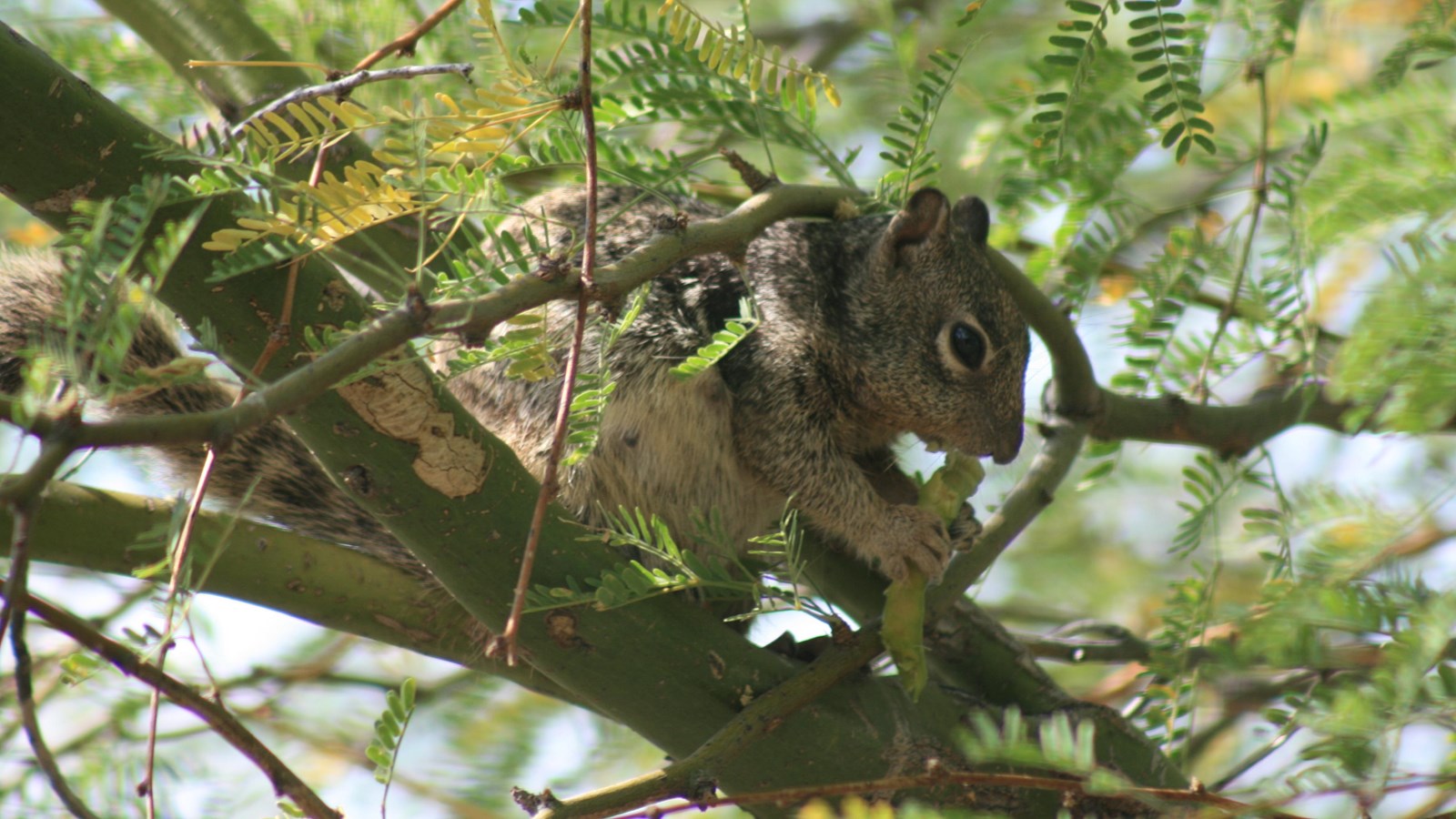Last updated: June 18, 2021
Place
Ajo Mountain Drive Stop 13

NPS Photo
Stop 13
The Trees of Life
The mesquite tree has long inhabited the land you see before you. The fruit is high in carbohydrates and attracts many different herbivores. The mesquite adapted seed dispersal so that when seedpods were eaten in great quantities, they were dispersed across the land. Rabbits, packrats, javelina and coyote all depend on the seasonal seedpods for food. These animals, and others, help to scatter the mesquite seeds across the desert.
In the 1500s, missionaries introduced the cow, which allowed for even greater seed dispersal. Cattle no longer range in the monument but the abundance of mesquite serves as a reminder of their presence. Often called the “Tree of Life”, many desert-dwellers owe their survival to the mesquite tree. The seeds were, and still are, ground into flour used for breads. These seeds have more protein than soybeans and were a major food source for the Tohono O’odham.
Another tree that sustains life in the desert is the palo verde. With its green trunk and branches, the palo verde has a very clever way of conserving moisture. By not having leaves during the hot season, it can photosynthesize and respire (that is to create energy and breathe) through its trunk, thus conserving water.
The palo verde can also serve as a nurse tree. Saguaro seeds need shelter from a nurse plant such as a creosote or palo verde tree. These plants protect the young cactus from sunburn, torrential floods and the occasional winter frosts. Nurse trees such as the palo verde, mesquite and ironwood even fertilize the young cacti as the trees fix nitrogen from the air into the soil for themselves. The young cactus is “nursed” as it grows up tall and strong, spreading its shallow root system out to collect rain as it falls. This is not good news for the nurse plant. As the cactus roots spread only 3-4 inches below the surface of the soil, what started as a shelter becomes a battlefield for water. The saguaro proves victorious. Many of the monument’s larger saguaros are surrounded by remains of their dead nurse trees.
